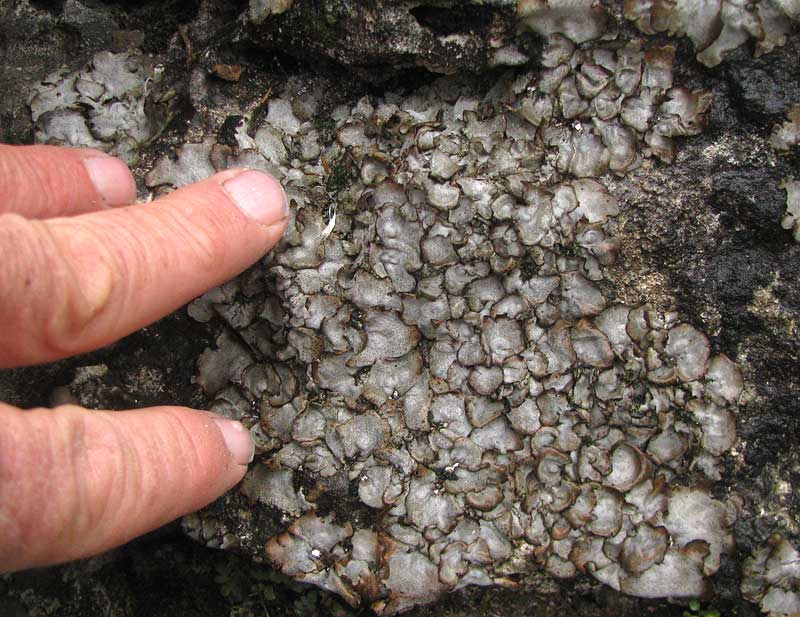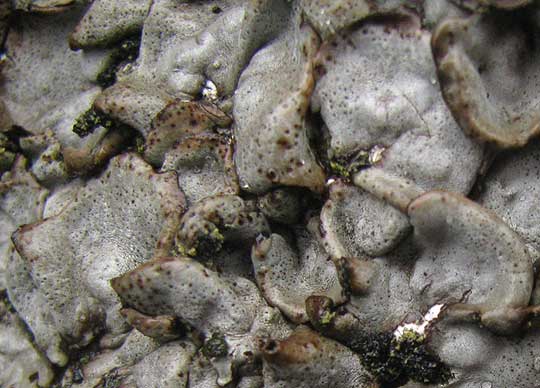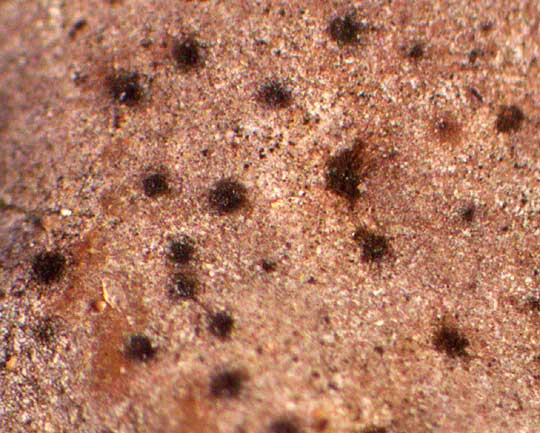Excerpts from Jim Conrad's
Naturalist Newsletter

from the February 16, 2014 Newsletter issued from the Frio Canyon Nature Education Center in the valley of the Dry Frio River in northern Uvalde County, southwestern Texas, on the southern border of the Edwards Plateau; elevation ~1750m (~5750 ft); N29.62°, W99.86°; USA
DERMATOCARPON LICHEN
On the hard Edwards Limestone of early Cretaceous age capping our hill, covering a hand-high vertical face beneath a little overhang facing eastward, a new lichen turned up, a foliose one looking like lots of little gray fingernails of various sizes all crammed together, as shown above.
Something unusual about this lichen gave me hopes of being able to identify it, despite there being no cuplike, spore producing apothecia, which normally are needed for identification. The atypical feature was that the lichen's smooth thallus surfaces were dotted with tiny, brownish spots, seen below:

Even the thalli's pale brown undersurfaces were speckled with dots, seen below:

Since in the Northern Hemisphere this is a widespread species and in some places is fairly common, it was easy to find labeled pictures of it. It's DERMATOCARPON MINIATUM -- not so common as to have a common name -- and lichenologists already have collected it on limestone in Lost Maples State Natural Area in the neighboring county to the north of here. This is the first time I've noticed it in our canyon, though.
Experts refer to the conspicuous brown dots on the thallus surface as "ostioles of perithecia." Ostioles are small pores on the body's surface, and perithecia are spherical, cylindrical, or flask-shaped hollow fruiting bodies of certain fungi containing the microscopic, spore-producing structures known as "asci."
Our Dermatocarpon lichen didn't have the usual apothecia because the species doesn't produce them. It issues its spores from its ascus-coated ostioles instead. In fact, certain old literature refers to the ostioles of Dermatocarpon as apothecia, but I don't find that usage in modern works.